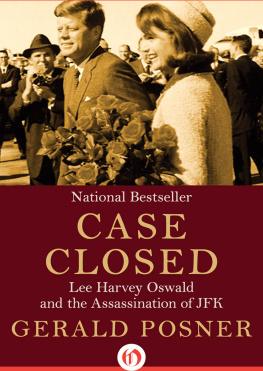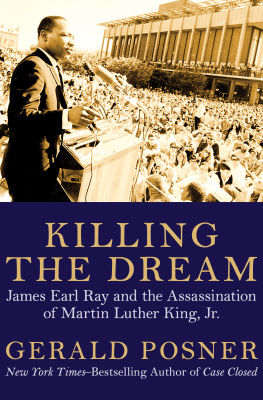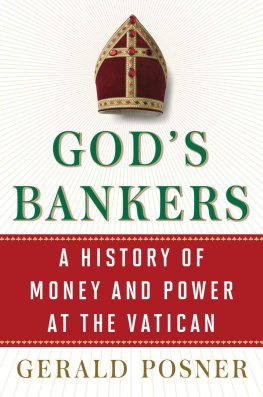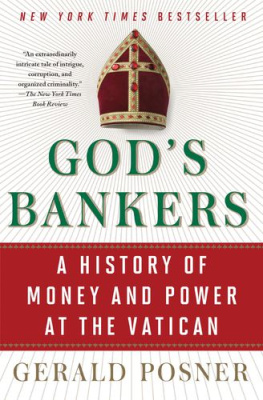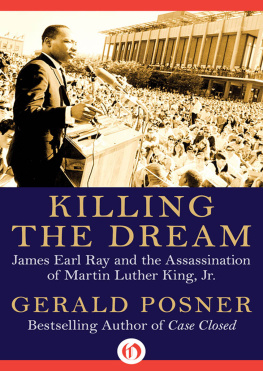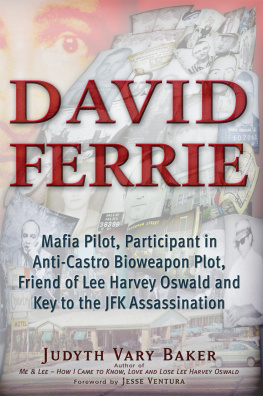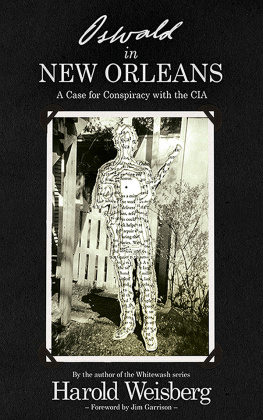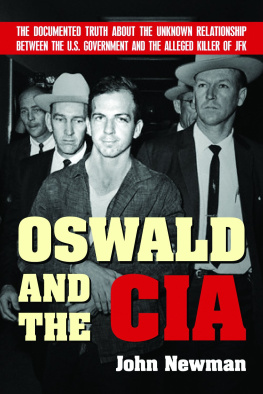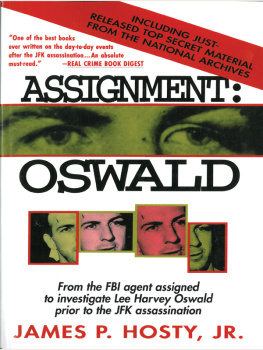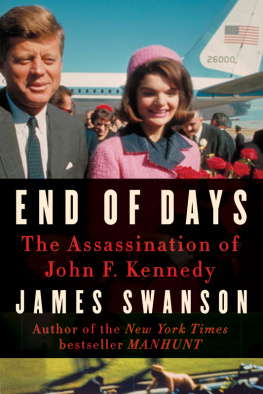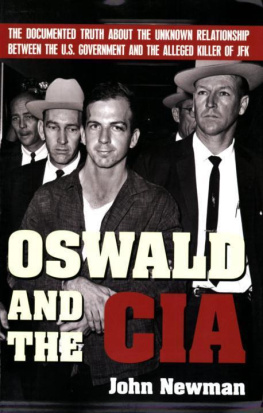Case Closed
Lee Harvey Oswald and the Assassination of JFK
Gerald Posner

TO
BOB LOOMIS, MY EDITOR,
WHO NURTURED THIS PROJECT FROM ITS INCEPTION,
AND TO
TRISHA, MY WIFE, MY PARTNER, MY LIFE
Contents
Authors Note
The response to the hardcover publication of this book surprised both me and my publisher, Random House. We were initially worried that the book might be lost in the publicity surrounding the publication of other books espousing convoluted theories. But we had underestimated the extent to which, after thirty years of virtually unchallenged conspiracy conjecture, the conclusion that Oswald acted alone in assassinating JFK had evolved, ironically, into the most controversial position. While the medias response was overwhelmingly positive, the reaction from the conspiracy community was the oppositenot simply negative, but often vitriolic. There was little effort to study my overall evidence and conclusions with anything that approached an open mind. Indeed, there was a concerted counterattack to discredit both the book and its author.
There were panel discussions at conspiracy conventions in Boston and Dallas and special publications focused solely on contesting the book. A conspiracy-based research center in Washington, D.C., issued a media alert about Case Closed. The release consisted of five pages alleging the book was misleading and flawed, but the alert misstated my arguments and distorted the evidence in the case. Harold Weisberg, one of the deans of the conspiracy press, found his first publisher (he had previously self-published six conspiracy books) to bring out a book titled Case Open, a broadside attack attempting to diminish the impact of my work.
Other conspiracy buffs launched personal attacks. It was, as one journalist commented, as if overnight I had become the Salmon Rushdie of the assassination world. I was accused of treason by a buff who ran a Dallas research center, and my wife and I were subjected to several months of harassing telephone calls and letters. At an authors luncheon, pickets protested that I was a dupe of the CIA. Faxes and letters to the media also charged I was a CIA agent, or that the CIA had written my book, or that I was part of a conscious effort to deceive the public and hide the truth. (Some critics even expanded the accusations to my first book about Nazi doctor Josef Mengele, contending that I whitewashed the Mengele investigation, when actually that book was the first to detail Mengeles entire life on the run, including his time in U.S. captivity and the Israeli and German bungling of his capture.) Television and radio producers were harassed by callers attempting to have my appearances cancelled. Some reviewers who wrote favorably about the book received intimidating calls or letters. My publisher was subjected to the same treatment, and even my editor, Bob Loomis, was publicly accused of being a CIA agent.
Although I had expected that individuals who had invested their adult lives into investigating JFK conspiracies might react angrily to a book that exposed the fallacies in their arguments, the vehemence of these personal attacks surprised me. I had mistakenly expected a debate on the issues. It took little time to discover, however, the extent to which many people who believe in a JFK conspiracy do so with almost a religious fervor and are not dissuaded by the facts.
Case Closed was probably subjected to greater scrutiny by more critics than any other book published in recent years. Several emendations in this book are the result of what some charged as fraudulent omissions in my discussion of various aspects of the case. Because Case Closed attempted to deal with all the major issues in the assassination, plus countless arguments raised by conspiracy critics in the three decades following the Warren Commission, many of these, especially those addressed in footnotes, were condensed. To fit all of my research into a single, manageable volume, I did not have the luxury of presenting and explaining each nuance of every issue, but instead focused only on primary arguments. For instance, in a few pages I addressed the theory that JFKs corpse was stolen from Air Force One and medically altered, although the author of that theory took over seven hundred pages to present it. Obviously, not every point raised in his book could be dealt with in Case Closed.
In the first edition, I acknowledged that any of a dozen issues could have been the subject of a separate book, including, among others, Oswalds time in Russia, Jack Rubys story, or the actual assassination. However, there was not one aspect of the assassination in which I did not study all of the available evidence before reaching any conclusion. Conspiracy critics, often complained that I had omitted some information that they contended contradicted one or another of my conclusions. In this edition, I have reinstated material included in earlier drafts but cut for the sake of brevity, to further explain the layers of intricacies in this case.
The remainder of the updated text in this edition has nothing to do with contentions raised by conspiracy buffs, but rather is the result of new scientific evidence or documents uncovered since the hardcover publication. Some of the information is critical, including the first confirmation that two of Oswalds fingerprints have now been identified on the trigger guard of his rifle, the one ballistically proven to have fired the bullets that killed JFK. Also, new disclosures about Oswalds visit to Mexico City provide important insights into the extent of his instability only two months before JFKs visit to Dallas. These, and other significant discoveries, such as a 1962 CIA debriefing of Oswald, have been added to the book.
The updated and restored information in this edition has only strengthened the books original conclusion that Oswald and Ruby acted alone. Government files will continue to be released for the next few years. Not only am I familiar with the content of many already released, but I have spoken to individuals who are familiar with the still-classified documents. None of the government documents to be released alters the judgment reached in Case Closed.
Time and technology have caught up to the conspiracy critics. Some of their most important contentions have collapsed; for example: Photographic tests reveal that the backyard photos of Oswald holding his weapons, contested as fakes, are authentic; ballistics and computer studies confirm the so-called magic bullet theory, long derided by conspiracy theorists as impossible; and neutron activation tests provide the final link that Oswald tried to assassinate General Edwin Walker, a crime for which many considered Oswald innocent. After thirty years of studying the case the critics have failed to produce a single, cogent, alternate scenario of how the alleged conspiracy happened or who was involved.
There is more than enough evidence available on the record to draw conclusions about what happened in the JFK assassination. But apparently most Americans, despite the strength of the evidence, do not want to accept the notion that random acts of violence can change the course of history and that Lee Harvey Oswald could affect our lives in a way over which we have no control. It is unsettling to think that a sociopathic twenty-four-year-old loser in life, armed with a $12 rifle and consumed by his own warped motivation, ended Camelot. But for readers willing to approach this subject with an open mind, it is the only rational judgment.

